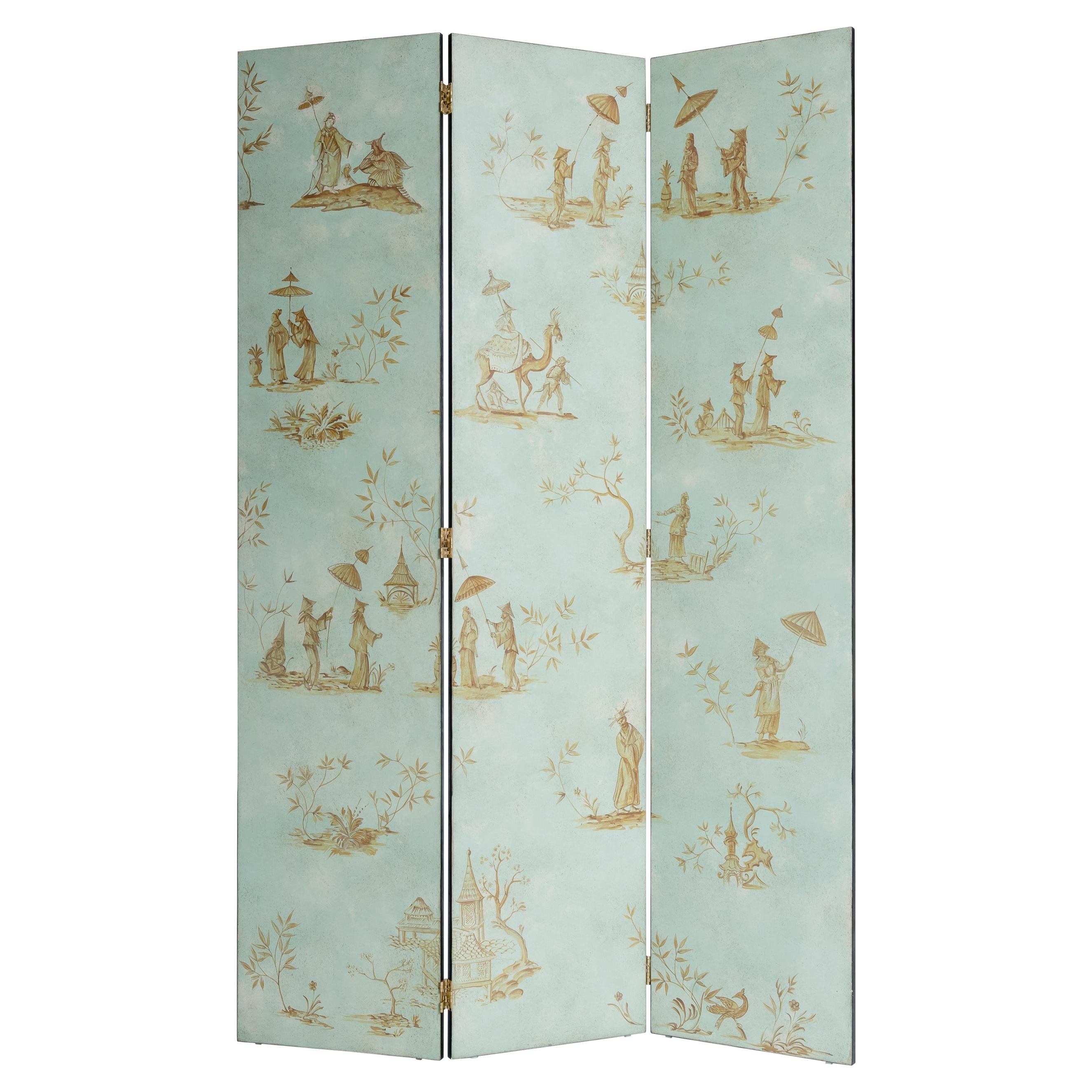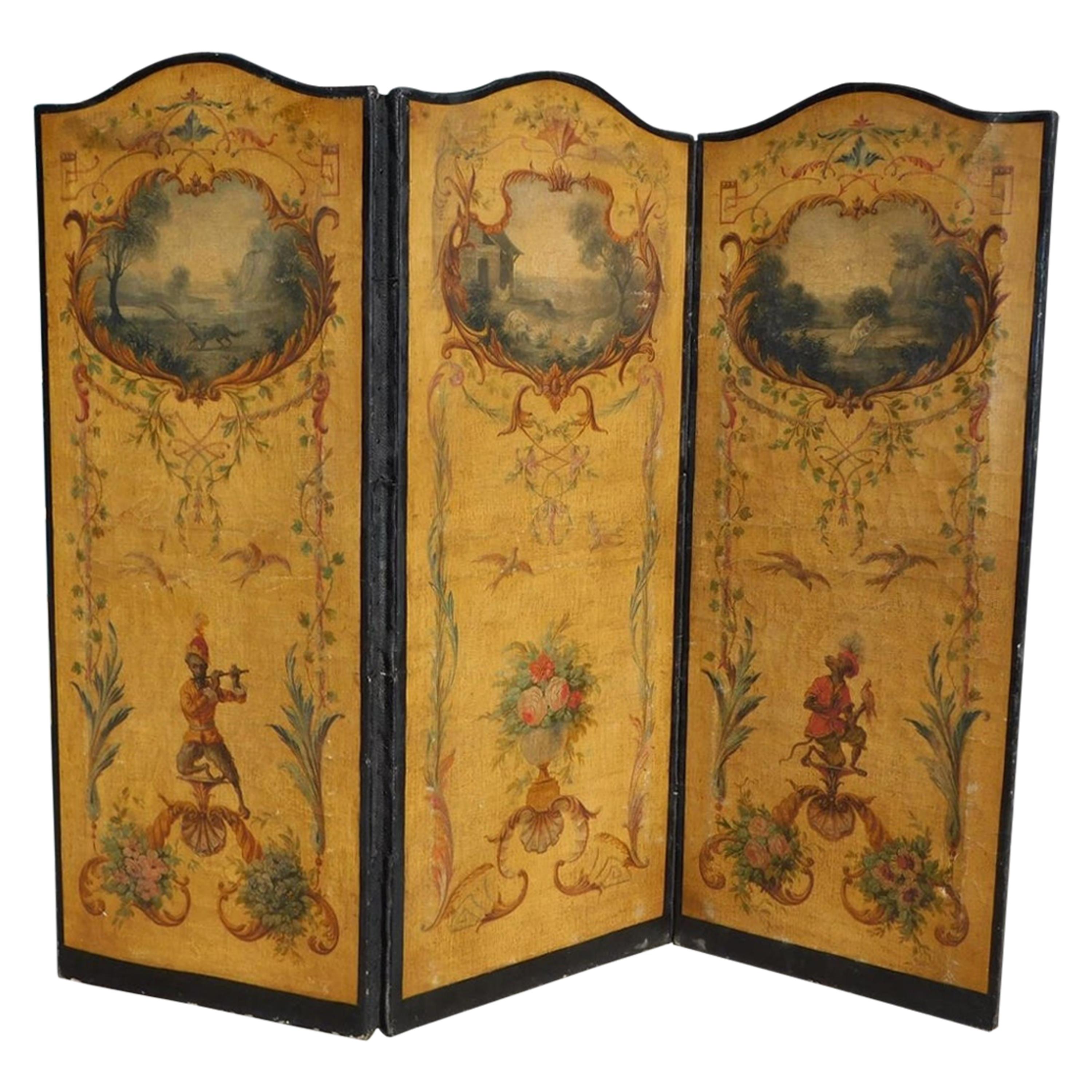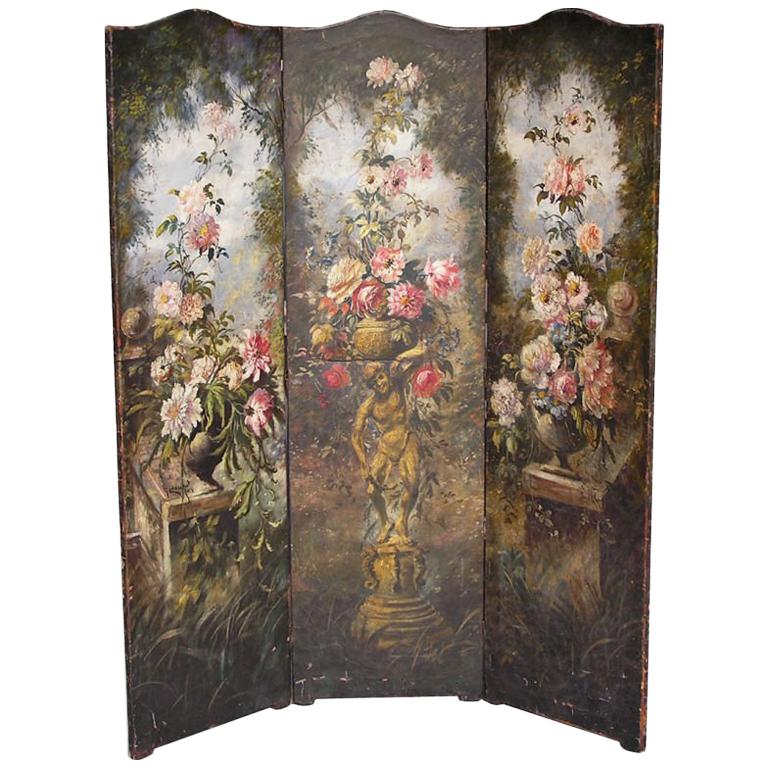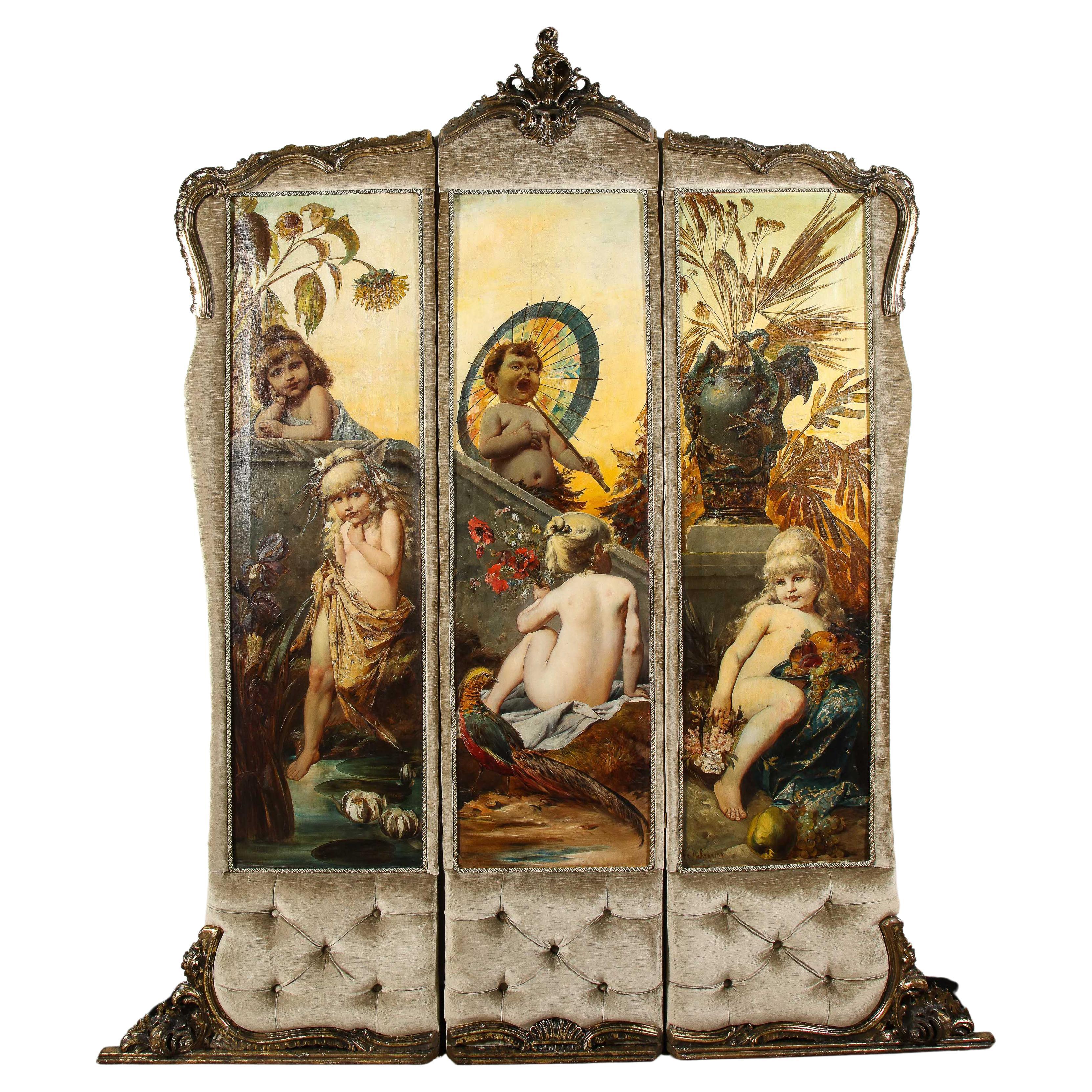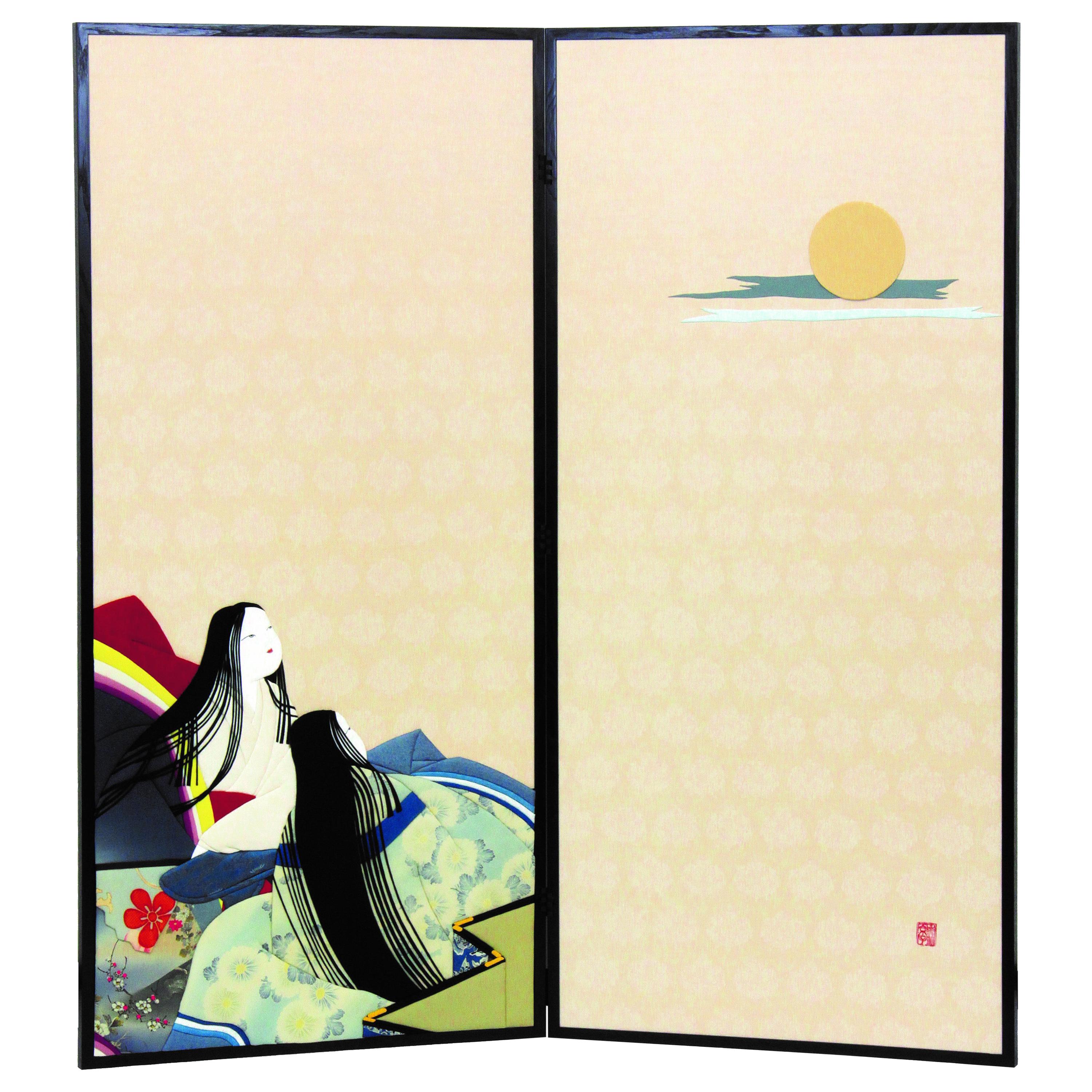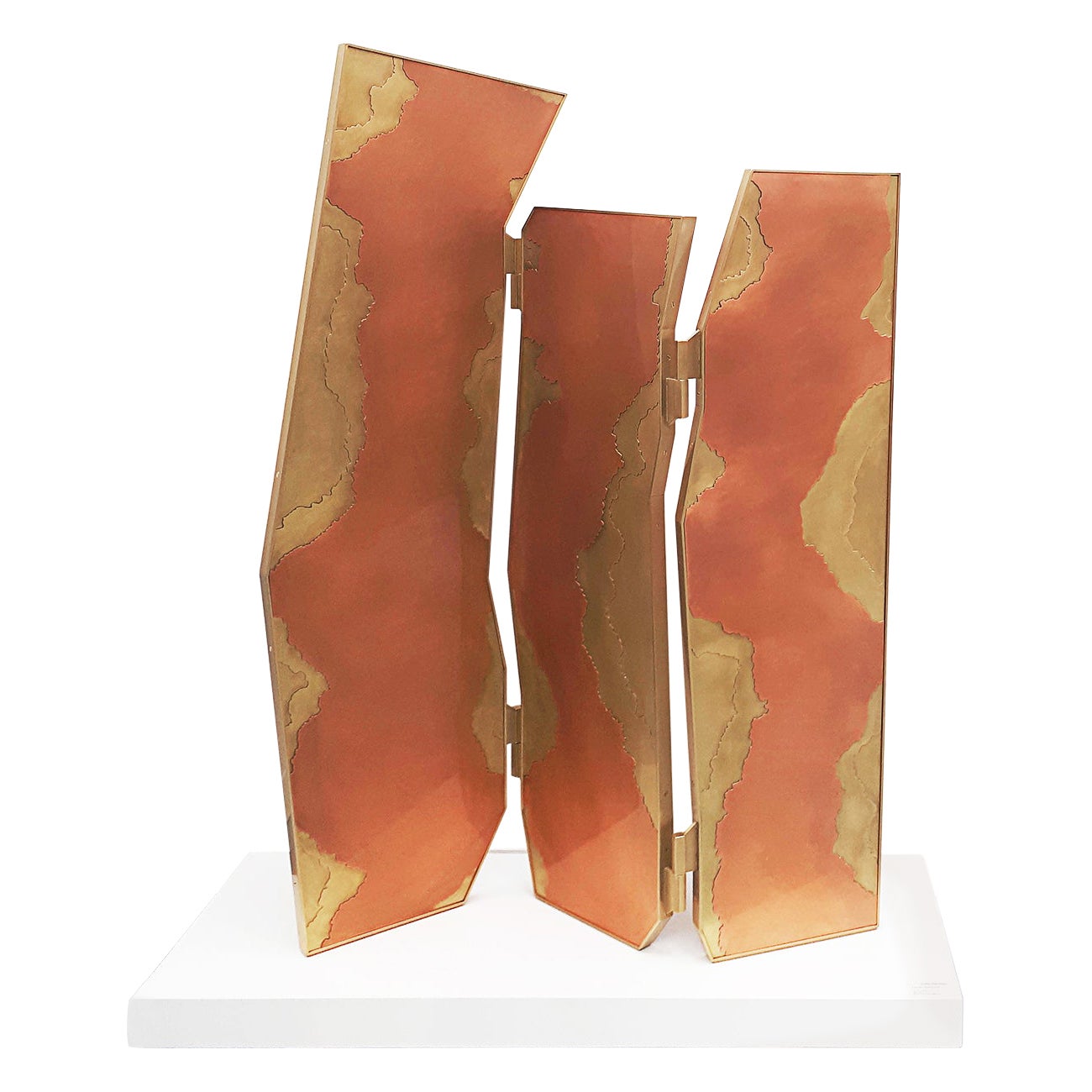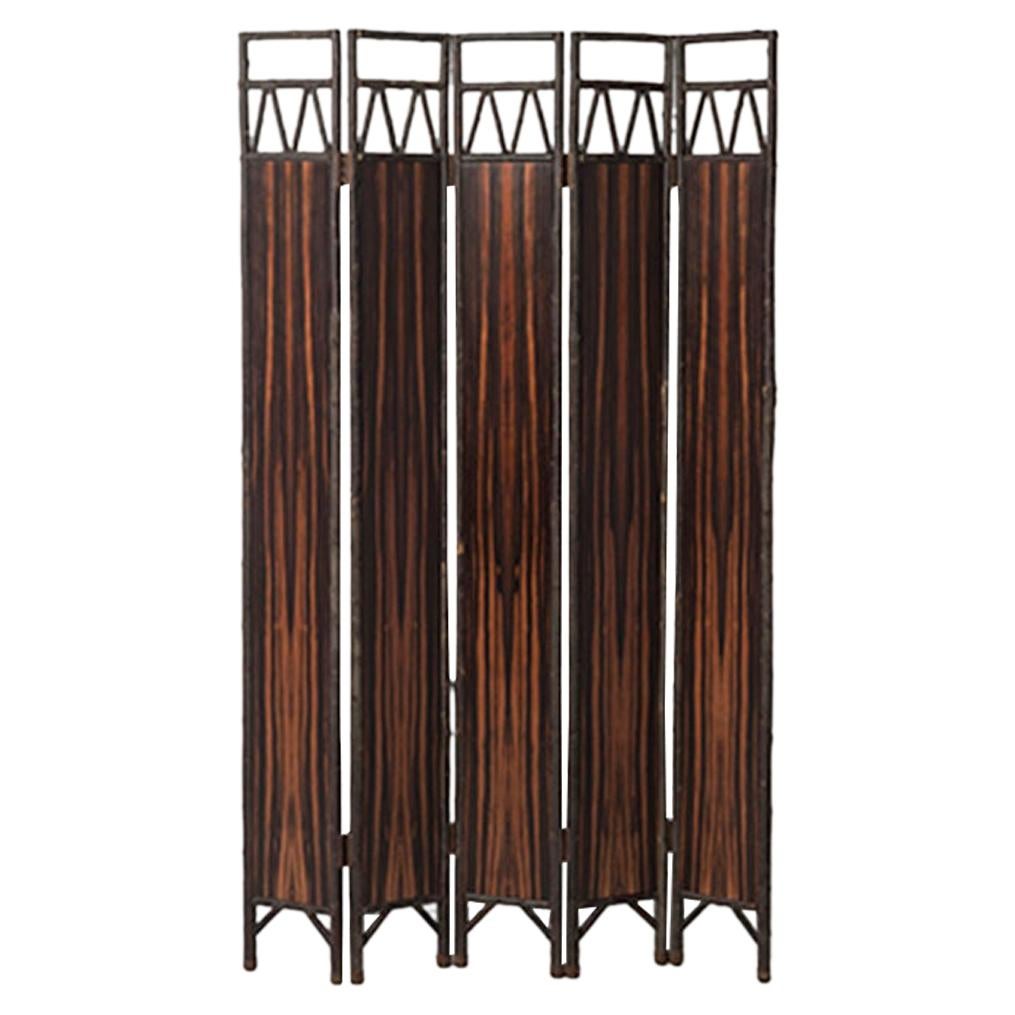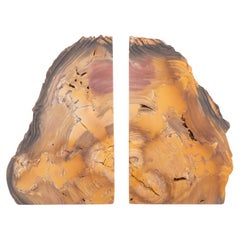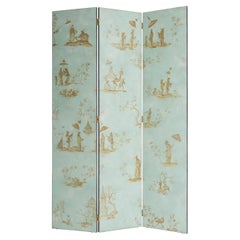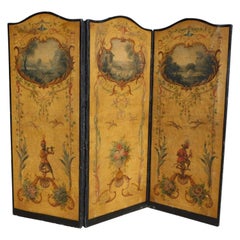
Japanese Two-Panel Screen
View Similar Items
Want more images or videos?
Request additional images or videos from the seller
1 of 9
Japanese Two-Panel Screen
$15,500List Price
About the Item
- Dimensions:Height: 66 in (167.64 cm)Width: 62 in (157.48 cm)Depth: 1 in (2.54 cm)
- Place of Origin:
- Period:
- Date of Manufacture:19th Century
- Condition:Very good vintage condition.
- Seller Location:Astoria, NY
- Reference Number:Seller: G2281stDibs: U1009298893431
About the Seller
4.9
Gold Seller
Premium sellers maintaining a 4.3+ rating and 24-hour response times
1stDibs seller since 2010
2,579 sales on 1stDibs
Typical response time: 4 hours
Authenticity Guarantee
In the unlikely event there’s an issue with an item’s authenticity, contact us within 1 year for a full refund. DetailsMoney-Back Guarantee
If your item is not as described, is damaged in transit, or does not arrive, contact us within 7 days for a full refund. Details24-Hour Cancellation
You have a 24-hour grace period in which to reconsider your purchase, with no questions asked.Vetted Professional Sellers
Our world-class sellers must adhere to strict standards for service and quality, maintaining the integrity of our listings.Price-Match Guarantee
If you find that a seller listed the same item for a lower price elsewhere, we’ll match it.Trusted Global Delivery
Our best-in-class carrier network provides specialized shipping options worldwide, including custom delivery.More From This Seller
View AllJapanese Ink and Watercolor 4-Panel Floor Screen
Located in Astoria, NY
Japanese Four-Panel Floor Screen, Ink and Watercolor on Paper, mounted on board, depicting mountainous landscape scene with seaside village. Panel: 55.25" H x 24.75" W; whole: 99" W....
Category
20th Century Japanese Meiji Paintings and Screens
Materials
Wood, Paint, Paper
Wedgwood Blue Dip Jasperware Bas Relief Panel
By Wedgewood
Located in Astoria, NY
Wedgwood blue dip jasperware bas relief panel, likely late 19th century, and depicting classical women and children at study, rest, and play, now hous...
Category
Antique Late 19th Century Victorian Decorative Art
Materials
Ceramic
Max Ingrand Angel Playing Harp Stained Glass Panel
Located in Astoria, NY
Maurice Max-Ingrand (French, 1908-1969) Angel Playing Harp Stained Glass Panel, on red ground with stars, signed and marked "Made in France" upper left. 30" H x 22.5" W. Provenance:...
Category
20th Century French Gothic Revival Decorative Art
Materials
Stained Glass
Petrified Wood Mineral Specimen Bookends, Pair
Located in Astoria, NY
Pair of petrified wood mineral specimen sculpture bookends, each with two polished faces.
Dealer: S138XX
Category
20th Century Unknown Other Bookends
Materials
Wood
George III Style Mahogany Library Steps, Pair
Located in Astoria, NY
Pair of George III Style Mahogany Library Steps, one marked "045" to underside and one marked "055" to underside, each marked "2004 The Bombay Company, Inc." and with "Bombay" plaque...
Category
21st Century and Contemporary Indian George II Ladders
Materials
Mahogany
Quatrefoil Stained Glass Window, 19 C.
Located in Astoria, NY
Quatrefoil Stained Glass Window, 19th century, depicting Christ in blessing gesture, mounted between mat board. Image: 16" H x 16.5" W; mat: 20" H x 26.5" W. Provenance: From an Uppe...
Category
Antique 19th Century Other Decorative Art
Materials
Stained Glass
You May Also Like
20th Century French Two Panel Screen
Located in Nashville, TN
Two panel folding screen with oil paintings depicting mythological male figures. Back of screen is upholstered in silk damask. Brass nailhead trim. Fabric hinges.
Category
Early 20th Century French Screens and Room Dividers
Materials
Silk, Damask
Mid-18th Century Spanish Set of Two 4-Panel Embossed Leather Folding Screens
Located in Marbella, ES
Mid-18th century Spanish set of two 4-panel oak embossed leather folding screens in Cordoba manner with gilt, colorful polychromy, bone and "pal...
Category
Antique 18th Century Screens and Room Dividers
Materials
Leather, Wood
18th Century Hand-Painted Venetian Style Aquamarine 3-Panels Otello Screen
By Porte Italia
Located in Ronchi dei Legionari, IT
From our Hand-Painted Furniture Collection, we are pleased to introduce you to our aquamarine otello screen with ochre chinoiserie vignettes.
A hand-painted screen evokes the luxury...
Category
2010s Italian Other Screens and Room Dividers
Materials
Wood
French Three Panel Decorative Painted Canvas Screen with Musical Monkeys C. 1830
Located in Charleston, SC
French three panel decorative painted canvas folding screen with dogs playing in landscape scenes, perched musical monkeys, and foliage motif. Early 19th century.
Category
Antique 1830s French Louis Philippe Screens and Room Dividers
Materials
Canvas, Wood, Paint
American Hand Painted Three Panel Floral Leather Screen , Signed N.Y. Circa 187
By A. Lasslow
Located in Charleston, SC
American three panel hand painted leather screen with floral urns on squared plinths & figural statue motif. Late 19th Century . Signed by ...
Category
Antique 1870s American American Empire Screens and Room Dividers
Materials
Leather, Paint
Palatial and Opulent Belle Epoque Giltwood & Oil on Canvas Three-Panel Screen
By Ferdinand Wagner II 1
Located in Queens, NY
A Palatial and Opulent Belle epoque giltwood & oil on canvas three-panel screen, circa 1890.
"Allegory of Youth"
Comprising of three exquisite hand-painted triptych oil on canvas panels of cherubs and putti amongst a peacock, all by Ferdinand Wagner II (German, 1847-1927).
Each panel depicting different playful and joyous scenes of putti and cherubs.
All three-in-one panels within individually carved giltwood and upholstered frames. One panel signed at the lower left: Ferd.Wagner.
A truly magnificent and one of a kind piece, perfect for any room in the home.
Overall: 101" high 85" wide x 5" deep
Very good condition. Ready to place.
Ferdinand Wagner II (German, 1847-1927) was the son of Passau Ferdinand Wagner Senior, a teacher at a vocational art school who began training him professionally at a young age. After traveling to Italy in 1867-1868, he continued with his art studies at The Munich Academy of Arts led by Peter Von Cornelius and Julius Schnorr Von Carolsfeld. Wagner II was influenced by the Munich School of master painters and by his art teacher, Karl von Piloty, who had been teaching at the Munich Art Academy since 1856. Piloty’s approach to historical paintings was influenced by the French art academic Paul Delaroche and by the fine artworks by Rubens and the Venetians.
After his return to Germany he was commissioned to decorate the former the Tenormayer Wine Tavern in Munich, subsequently he received numerous other commissions as a decorator. Ferdinand Wagner II wall paintings and ceiling frescos...
Category
Antique 19th Century German Belle Époque Screens and Room Dividers
Materials
Canvas, Upholstery, Giltwood, Paint
$62,500 Sale Price
50% Off
Recently Viewed
View AllMore Ways To Browse
V Trend
Vintage European Kitchen Cabinet
Vintage Twa
Window Lattice
3 Dolphins
3 Horses Plate
36 Inch High Storage Cabinet
Antique Ark
Antique British Flag
Antique Measuring Tapes
Antique Military Helmets
Antique Ships Clock
Antique Stained Glass Cabinet
Antique Tape Measure
B Wilhelm
Bamboo Plant Stands
Baroque Drawer Pulls
Baroque Italian Pedestal


